Leadership activities can be divided into 4 levels:

The tip of the leadership pyramid is formed by leadership providing a framework:
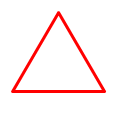 |
1. Leadership providing a framework
The basic agreements are made, changed or terminated
|
· Employment
· Job description
· Induction meetings
· Agreement on resources provided
· Provision of decision-making capacity
· Is there congruence between task, responsibility and ability to make decisions? (T.R.D)
· Do the capabilities match the job?
· Salary discussions, redeployments
· Relocations, transfer, dismissal by altered conditions of employment: reorganisation, longer term sickness, impairment
· Official warning, dismissal, outsourcing
|
|
|
2.
|
|
|
|
3.
|
|
|
|
4.
|
|
If the framework agreements are not correct or if they come off the rails then this generally will lead to a series of disruptions to work and output. If there has been no leadership for a long time, order must often be created at this level before doing anything else.
Once the framework has been created work can begin: the bottom layer of the leadership pyramid is formed by the day-to-day work of leadership or reactive leadership.
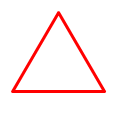 |
1. Leadership providing a framework
The basic agreements are made, changed or terminated
|
|
|
|
2.
|
|
|
|
3.
|
|
 |
4. Reactive leadership
Day-to-day work of leadership
|
· Question and inform staff and require decisions
· Instruct, correct and inform staff
· Staff complain about others
· Enquiries and queries from customers
· Phone calls, e-mails, post from superiors, colleagues
· Meetings and discussions
· Correcting errors
· Projects discussions
· Feedback from output, results
· Objective agreements, task assignments
· Voting
· …
|
For most managers the reactive part is the major part of the job. The triggers for the ever smaller work, information and decision packages come from a variety of directions and fields of work.
1. Objectives, key tasks, priorities change so quickly that the available job descriptions are no longer sufficient for guiding the staff. This gap can be closed by a series of leadership tools which are as a rule connected with other elements within the company and therefore are systematicin character -> Leadership systems
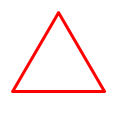 |
1. Leadership providing a framework
The basic agreements are made, changed or terminated
|
|
 |
2. Leadership systems
Adjustment of objectives, budget, evaluation and salary
|
· Evaluation systems
· Potential evaluation systems
· Forecast and estimate
· Budget
· Annual staff reviews
· Development reviews
· Companywide objectives, management accounting and feedback systems such as
· Score-Card, EFQM and their successors and derivatives
|
|
|
3.
|
|
 |
4. Reactive leadership
Day-to-day work of leadership
|
|
It is necessary because day-to-day business leaves no space and the gap between the individual annual meetings would be far too long. ("On 15 January, seven months ago, in a meeting you said…")
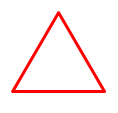 |
1. Leadership providing a framework
The basic agreements are made, changed or terminated
|
|
 |
2. Leadership systems
Adjustment of objectives, budget, evaluation and salary
|
|
 |
3. Proactive leadership
Leadership tools
Cheque for four leadership parameters:
· Should
· Can
· Want
· Relationship
|
· Changes in priorities and objectives
· Current main issues, what are superiors and staff concerned with?
· Are there points of in the relationship between superiors and staff
· State of work satisfaction and motivation, analysis of the scope for change
· Capacity development, milestones
|
 |
4. Reactive leadership
Day-to-day work of leadership
|
|
Alongside the high level of self-discipline required to hold conversations at all, the proactive leadership level is characterised by a medium level of abstraction. An attempt must be made to resist falling into day-to-day business. This is why it is essential to have a sheet of paper for notes regarding customer projects and things to do.
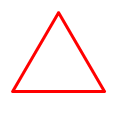 |
1. Leadership
providing a
framework
The basic agreements are made, changed or terminated
|
· Employment
· Job description
· Induction meetings
· Agreement on resources provided
· Provision of decision-making capacity
· Is there congruence between task, responsibility and ability to make decisions? (TRD)
· Do the capabilities match the job?
· Salary discussions, redeployments
· Relocations, transfer, dismissal by altered conditions of employment: reorganisation, longer term sickness, impairment
· Notice, dismissal, outsourcing
|
 |
2. Leadership
systems
Adjustment of objectives, budget, evaluation and salary
|
· Evaluation systems
· Potential evaluation systems
· Forecast and estimate
· Budget
· Annual staff reviews
· Development reviews
· Companywide objectives, management accounting and feedback systems such as
· Score-Card, EFQM and their successors and derivatives
|
 |
3. Proactive
leadership
Leadership tools
Cheque for four leadership parameters:
· Should
· Can
· Want
· Relationship
|
· Changes in priorities and objectives
· Current main issues, what are superiors and staff concerned with?
· Are there points of in the relationship between superiors and staff
· State of work satisfaction and motivation, analysis of the scope for change
· Capacity development, milestones
|
 |
4. Reactive
leadership
Day-to-day work of leadership
|
· Question and inform staff and require decisions
· Instruct, correct and inform staff
· Staff complain about others
· Enquiries and queries from customers
· Phone calls, e-mails, post from superiors, colleagues
· Meetings and discussions
· Correcting errors
· Projects discussions
· Feedback from output, results
· Objective agreements, task assignments
· Voting
· …
|